#Lagonda engine
Explore tagged Tumblr posts
Text


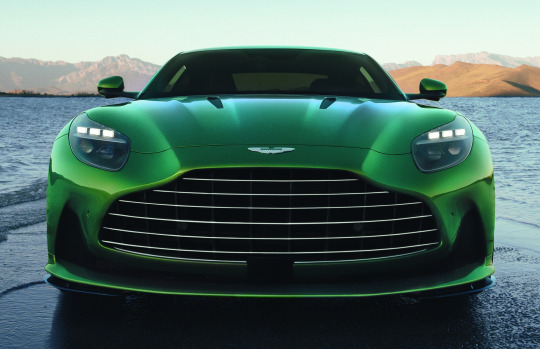





What a difference 72 years makes juxtaposition of Aston Martin DB2 Vantage, 1951 & Aston Martin DB12, 2023. The new generation DB is powered by a 670BHP 4.0 V8 Twin-Turbo engine sourced from Mercedes-Benz. The DB2 Vantage had a 2.6 litre DOHC Lagonda straight 6 that produced 125BHP. David Brown (the origin of the DB initials) had bought Lagonda at the same time as Aston Martin largely to get access to the 6 cylinder engine which had been designed by W. O. Bentley.
#Aston Martin#Aston Martin DB12#Aston Martin DB2#grand tourer#1951#2023#new cars#V8#twin turbo#straight 6#DOHC#Lagonda engine#Mercedes engine#what a difference
175 notes
·
View notes
Text

Lagonda V12 Engine Cabriolet 1939. - source Renaud Mann via Old British Car Club.
129 notes
·
View notes
Text
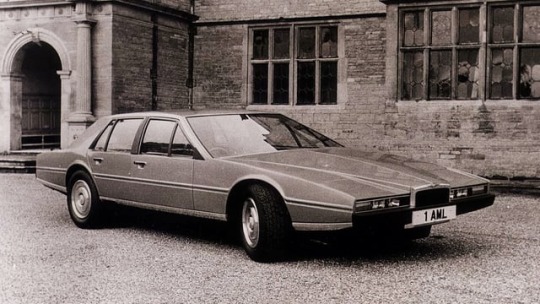
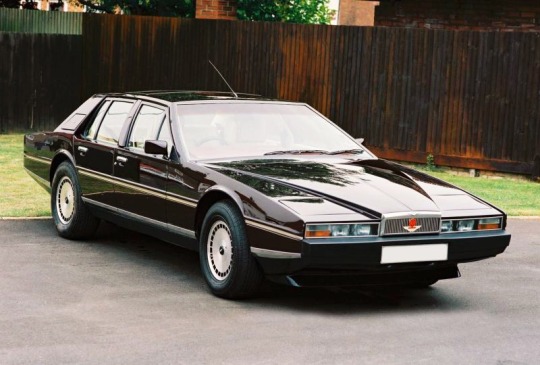

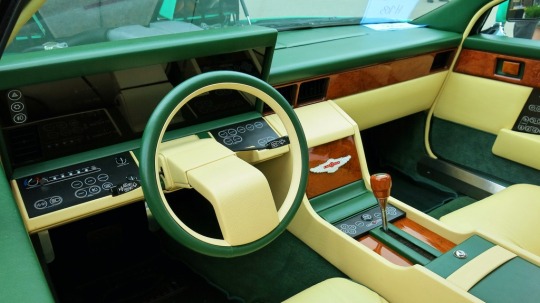

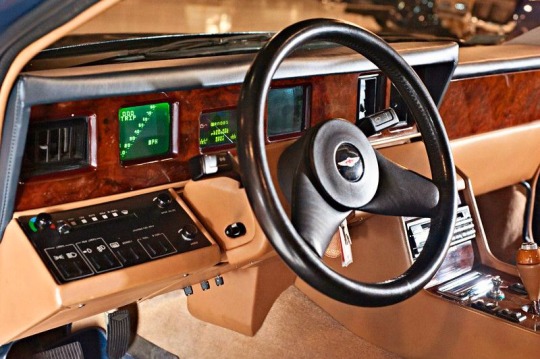
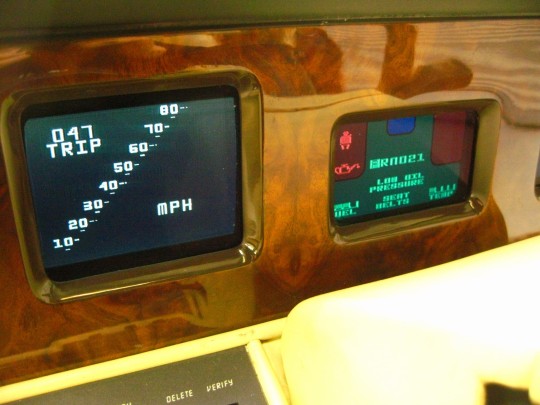
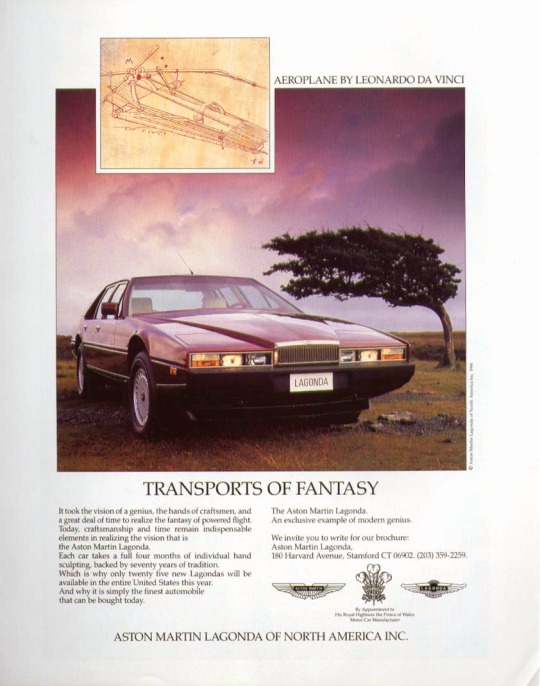


🇬🇧 Embark on a journey through the illustrious lineage of the Aston Martin Lagonda, spanning from 1976 to 1990, a testament to automotive luxury and innovation!
👑 Founded in 1913, Aston Martin has become synonymous with luxury, English elegance, and high-performance automobiles. In the early 1970s, it continued to push the boundaries of automotive design and engineering.
🚘 The Aston Martin Lagonda lineup of the late 1970s and 1980s exemplified the pinnacle of luxury automobiles, featuring sleek and sophisticated designs that set new standards for elegance and refinement.
🛞 Beneath their refined exteriors, the Lagonda boasted powerful V8 engines, delivering exhilarating performance and effortless cruising. Their spacious and sumptuously appointed interiors were outfitted with the latest amenities, including plush leather upholstery and polished wood trim.
💡 The Lagonda was known for its innovative use of electronic systems, including digital dashboard displays, onboard computers, and advanced climate control systems, setting new benchmarks for automotive technology and innovation.
💔 Despite critical acclaim and a loyal following, production of the Aston Martin Lagonda ultimately ceased in 1990. One of the key factors contributing to the discontinuation of the Lagonda series was the high cost of production and limited demand in the luxury car market.
#brits and yanks on wheels#transatlantic torque#retro cars#vehicle#cars#old cars#brands#companies#automobile#american cars#aston martin#aston martin lagonda#lagonda#old car#cool cars#classic cars#car#english cars#made in uk#made in england#luxury car#luxury cars#luxurycars#luxury#innovation#innovative#innovators#electronic#electronics#v8 engine
67 notes
·
View notes
Text
Aston Martin Lagonda Global Holdings PLC (LON AML): Luxury Automotive Excellence
Aston Martin Lagonda Global Holdings PLC (LON AML) represents the epitome of luxury and performance in the automotive sector. Renowned for its iconic design and engineering innovation, the company remains a prominent name in the LON industrial stocks category. Discover more about this dynamic player in the automotive industry.
0 notes
Note
Keith, still trying to figure out an innuendo Charlie will pick up on: Hey Charlie, mind if I, uh, you know, sit in your Lagonda and maybe rev the engine? *wiggles eyebrows*
Charlie: Sure! Let me get my special suit!
Keith, ten minutes later, literally sitting in the car and revving the engine for Charlie: *sigh*
This has been making my brain itchy for two months, and I finally gave in and wrote a fic around it.
(tagging @ohjohnnysblog and @ericbogosbian in case they’re interested)
#it’s probably not good#but this idea would not leave me alone#and it needed to go if I’m going to get anything else done#(she says. like she’ll ever actually get anything done)#the rolling stones#charlie watts#keith richards#shirley watts#young married band#fanfic#fanfiction#ask response#anonymous#ao3#my stuff
1 note
·
View note
Text

1939 Lagonda V12 Engine Cabriolet.
Lagonda was founded in England in 1899 by American Wilbur Gunn. Lagonda is the Shawnee Indian name for Buck Creek in Gunn's native Springfield, Ohio. Automobile production began in the early 1900s, focusing on the luxury automotive segment, with continual development, improvement, and size throughout the years. The engines became more refined, culminating with the 4.5-liter, 6-cylinder Lagonda Rapide that was shown at the London Motor Show in 1934.
In 1935, lawyer Alan P. Good successfully outbid Rolls-Royce for control of Lagonda. Additionally, he was able to recruit W.O. Bentley as chief engineer followed by many of his former engineering staff from Rolls-Royce, the firm that had previously gained control over Bentley Motors Ltd in 1931. W.O. had been kept on as customer relations and testing advisor.
At Lagonda, W.O. and his newly formed team were tasked with improving the existing six-cylinder M45 chassis while simultaneously designing a new model. He improved the ignition and manifold on the M45 model and a new L45 model introduced in 1934. In October of 1936, the new LG6 was announced, featuring a torsion bar independent front suspension, a hypoid rear axle, and hydraulic brakes. The new V-12 model was also announced at the Olympia Motor Show, and the car's chassis were similar, with factory bodies offered on either chassis. Production did not begin until October 1937 and would continue until the outbreak of war in 1940. Customers favored the larger 12-cylinder engine over the six, with 189 examples of the twelve sold and just 85 of the six.
The Lagonda V-12s of 1937 to 1940s ranked among the finest automobiles and rivaled the contemporary multi-cylinder products on the market. The heart of the new Lagonda was its V12 engine by W.O. and engineer Stuart Tresilian, whom Bentley had recruited from Rolls-Royce. It had a 60-degree veed angle, and modern overhead-valve cylinder heads with a single overhead camshaft per cylinder bank. It had a short and compact stroke unit, with cylinder blocks cast in unit with the crankcase and side-by-side connecting rods. It was strong and lightweight thanks to leading-edge metallurgy and materials, with every component rigorously tested for reliability. The standard setup included a pair of new-design SU downdraft carburetors, helping to produce 180 horsepower at 5,500 engine revolutions.
0 notes
Text
Aston Martin DB2
The Aston Martin DB2 is a grand tourer that was sold by Aston Martin from May 1950 until April 1953. The successor to the 2-Litre Sports model, it had a comparatively advanced dual overhead cam 2.6 L Lagonda straight-6 engine in place of the previous overhead valve engine straight-four engine. It was available as a closed, 2-seater coupé which Aston Martin called a sports saloon, and later also as a drophead coupé, which accounted for a quarter of the model's total sales. The closed version had some success in racing.


74 notes
·
View notes
Photo



Aston Martin Lagonda Taraf [6.0 liter V12 engine, 540 horsepower] Top speed: 310+ km/h only 200 made
#aston martin#lagonda#limo#limousine#rolls royce#bentley#vanquish#db9#db11#v12#v12 engine#luxury#luxury cars#saloon#lifestyle#elite#rich#interior#6liter#maybach#mercedes#bmw#vantage#porshce#ferrari#carspotting#caraddict#rare#rare cars#classic
11 notes
·
View notes
Text
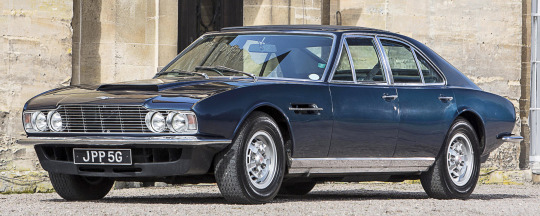
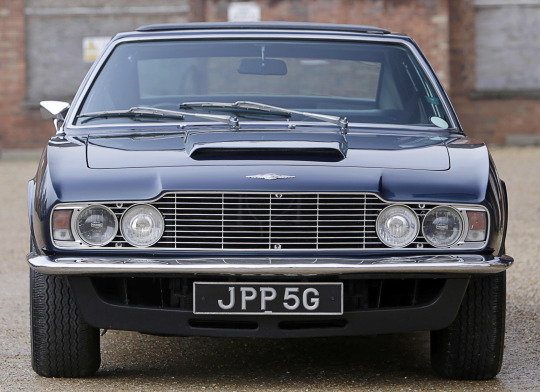


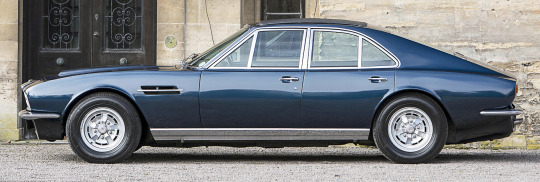
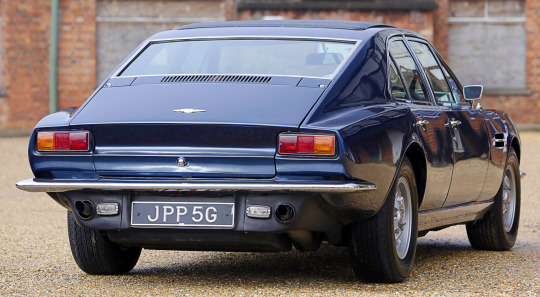
Aston Martin MP230 V8 Lagonda Prototype, 1969. When William Towns designed the DBS, he simultaneously worked on both a 2-door and 4-door versions of the same car. The prototype was built as a luxury saloon for the personal use of Aston Martin owner and CEO Sir David Brown. Originally fitted with a prototype 5 litre V8 engine and wire wheels, GKN Alloy wheels (pictured) and a production 5.3 litre V8 were fitted later. The "series production" version of the car was not offered for sale until 1974 and only 7 were made
#Aston Martin#Aston Martin V8 Lagonda#prototype#William Towns#luxury saloon#sports saloon#V8#1969#Aston Martin DBS#Sir David Brown#Lagonda
188 notes
·
View notes
Photo







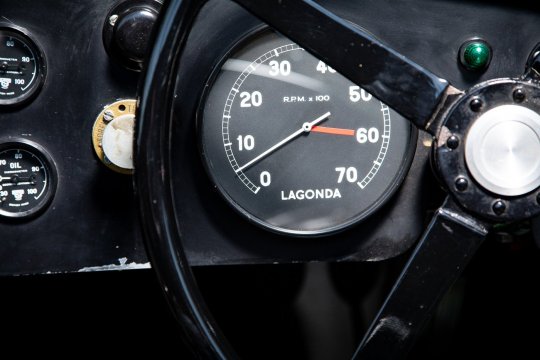


Lagonda V12
Under W.O. Bentley Lagonda developed a 4.5 liter V12 for a new luxury class. The new Lagonda V12 competed with Rolls Royce and Daimler. In addition to the factory body, there were also special bodies for which Lagonda supplied the chassis and engines. In 1939 two Lagonda V12 competed in the Le Mans 24 hour race. With the help of W.O. Bentley could be built a competitive car in a matter of months. The engine had a higher compression and thanks to four SU carburetors it now had 200 hp. The chassis was made easier by drilling and thanks to the aluminum body the car weighed only about 1350 KG. Result: 3rd and 4th place.
268 notes
·
View notes
Photo


Lagonda V12 Engine Cabriolet 1939. - source Cars & Motorbikes Stars of the Golden era.
72 notes
·
View notes
Photo




Aston Martin V8 Vantage
The Aston Martin V8 Vantage is a British grand tourer, a higher performance version of the Aston Martin V8. It was hailed at its 1977 introduction as "Britain's First Supercar" (sometimes nicknamed "British muscle car") for its 170 mph (270 km/h) top speed. Its engine was shared with the Lagonda, but it used high-performance camshafts, increased compression ratio, larger inlet valves and bigger carburettors mounted on new manifolds for increased output. Straight-line performance was the best of the day, with acceleration from 0–60 mph (97 km/h) in 5.3 seconds, one-tenth of a second quicker than the Ferrari Daytona.
191 notes
·
View notes
Photo

The Aston Martin Lagonda combined striking styling with opulent, club-like leather interior, and state-of-the-art instrumentation. It was the first production car in the world to use computer management and a digital instrument panel. The development cost for the electronics alone on the Lagonda came to four times as much as the budget for the whole car. These hand-built Lagondas were amongst the most expensive saloons in the world. The only other "production" cars to approach its lofty price tag were the Rolls-Royce Silver Spirit/Silver Spur and Bentley Mulsanne. A total of 645 chassis were built before the end of production in 1989. Each car required 2,200 man-hours to build and only about 25 were built per year for the U.S. Market. 3304 is an Exceptionally Original Example, with Just 8,200 Original Miles from Over 30 Years of Ownership 1984 Aston Martin Lagonda Series II VIN: SCFDL01S5ETL13304 Engine No. V/580/3304/LFA Built: November 1983 Selling Today! Exclusively at Auction, through @bringatrailer #astonmartin #aston #lagonda #astonmartinlagonda #luxury #automobile #classiccars #driveclassic #driversource (at Houston, Texas) https://www.instagram.com/p/CiNXwKvOVv9/?igshid=NGJjMDIxMWI=
#astonmartin#aston#lagonda#astonmartinlagonda#luxury#automobile#classiccars#driveclassic#driversource
4 notes
·
View notes
Photo

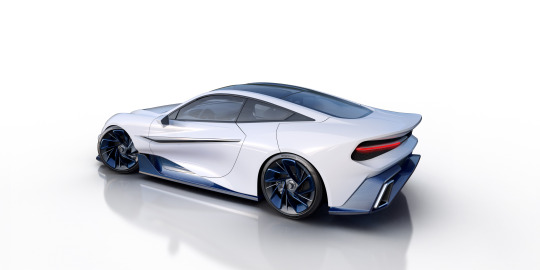
Naran Automotive Reveals Celare Pack for Debut Hyper Coupe
Naran Automotive, the new manufacturer of luxury ultra-high performance cars, has revealed a unique ‘Celare Pack’ for its debut model – The Naran.
The ‘Celare Pack’ highlights the duality of The Naran: an aggressive on track weapon as well as an object of beauty. It allows customers to tailor the four-seater hyper-coupé to meet their individual needs, whether they prefer pushing the limits on the track or a more understated and elegant aesthetic on public roads.
The innovative option – its name derived from the Latin for “to conceal or hide” – is inspired by the adjustable systems used in motorsport, includes the removal of the rear wing, adjustments to the front-end aerodynamic setup with airflow disrupters and a change of tires.
Within 20 minutes the aerodynamic package can be installed or removed by Naran Automotive engineers, switching The Naran between road-legal GT3 race car and a piece of art. Owners will receive a carbon wing cradle to mount the wing when not in use.
The Naran, an all-wheel-drive, front mid-engined hyper-coupé, is capable of producing an industry-leading 1,377kg of downforce, exceeding that of a GT3 race car. The Naran will accelerate from 0-60mph in less than 2.3 seconds, and 0-100mph in 4.56 seconds, with an expected top speed of over 230mph.
Naran Automotive has worked with technical partner EY3 Engineering, led by motorsport specialist Daniel Mense, to optimize whole vehicle aerodynamics to deliver this focused performance without compromising the monolithic design language and unmistakable coupé silhouette of The Naran.
The world class team has developed unique, hidden solutions to deliver a perfectly balanced vehicle, including motorsport-inspired carbon composite bargeboards, which are attached directly to the front wishbone to help smooth airflow from the front wheels. A full flat floor and split-rear diffuser delivers critical airflow to energize the rear wing, while the front splitter directs flow under the car feeding the front diffusers to generate all front downforce. The cooling channels above feed the brake discs, engine intake and cooling pack, with the latter exiting through the bonnet to increase downforce and reduce drag.
Alongside EY3 Engineering, Naran Automotive has assembled a team of world-class partners from the pinnacle of automotive design, motorsport, material innovation and powertrain development to create The Naran.
Jowyn Wong, founder of Wyn Design and visionary behind the Apollo IE and De Tomaso P72, is leading the design, while color and materials design is being tailored by Kate Montgomery, former Aston Martin Lagonda designer. The bespoke 5.0-litre twin-turbo V8 engine, which produces 1,048 bhp and 1,036Nm of torque, is being crafted in Germany with partners Racing Dynamics.
Just 49 examples of The Naran will be created, with each vehicle individually tailored to the personal taste of the collector, including the designation of a bespoke model name – a convention normally reserved for luxury superyachts.
The Naran will debut in early 2021
50 notes
·
View notes